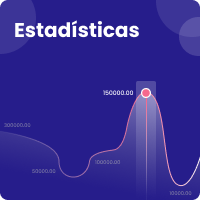Cloud testing y distributed testing como modelos de pruebas para sistemas de microservicios
DOI:
https://doi.org/10.26507/paper.2543Palabras clave:
Pruebas, Microservicios, Pruebas en la nube, Pruebas Distribuidas, SistemasResumen
Actualmente, la arquitectura de microservicios (MSA) ha ganado popularidad en la industria del software; especialmente al permitir la construcción de sistemas con componentes desacoplados que le aportan dinamismo y modularidad; sin embargo, esta arquitectura también presenta algunos desafíos, como el monitoreo y las pruebas. El objetivo de este trabajo es proponer un modelo de pruebas para MSA con la intención de mejorar la confiabilidad y estabilidad de las pruebas.
Este trabajo se desarrolló mediante dos etapas principales. En la primera etapa se identificaron modelos de prueba en Sistemas Distribuidos mediante búsquedas en bases de datos y búsquedas por bola de nieve. En la segunda etapa, utilizando los resultados del SMS, se realizó un proceso formal de selección para identificar el modelo más propenso a ser adaptado a MSA. Metodológicamente, este trabajo utilizó prácticas de la ingeniería de software basada en evidencias que fueron adoptadas para el SMS y el proceso de toma de decisiones.
En los resultados obtenidos, se identificaron los principales modelos de prueba en sistemas distribuidos; en base a esta información, se puntuaron los modelos identificados para determinar aquellos con mayor probabilidad de adaptación a sistemas de microservicios, priorizando la estabilidad y confiabilidad de la ejecución de las pruebas. Finalmente, se seleccionaron los modelos de Cloud Testing y Distributed Testing como los más aptos para adaptarse a los sistemas de microservicios de acuerdo con el objetivo propuesto.
Descargas
Citas
Ali, A. Q., Sultan, A. B. M., Ghani, A. A. A., & Zulzalil, H. (2019). A Systematic Mapping Study on the Cus-tomization Solutions of Software as a Service Applications. IEEE Access, 7, 88196–88217. https://doi.org/10.1109/ACCESS.2019.2925499
Almanasreh, E., Moles, R., & Chen, T. F. (2019). Evaluation of methods used for estimating content validity. Research in Social and Administrative Pharmacy, 15(2), 214–221. https://doi.org/10.1016/j.sapharm.2018.03.066
Alshuqayran, N., Ali, N., & Evans, R. (2016). A systematic mapping study in microservice architecture. Proce-edings - 2016 IEEE 9th International Conference on Service-Oriented Computing and Applications, SO-CA 2016, 44–51. https://doi.org/10.1109/SOCA.2016.15
Azzouzi, S., Benattou, M., & Charaf, H. (2012). Test execution control with timing constraints for testing distri-buted systems. Journal of Theoretical and Applied Information Technology, 46(1), 486–498. https://www.scopus.com/inward/record.uri?eid=2-s2.0-84874551626&partnerID=40&md5=e4a067422c93a1c5ffa40b81dd04a42b
Azzouzi, S., Benattou, M., & Charaf, M. E. H. (2015). A temporal agent based approach for testing open distributed systems. Computer Standards and Interfaces, 40, 23–33. https://doi.org/10.1016/j.csi.2015.01.003
Azzouzi, S., Benattou, M., El, M., Charaf, H., & Abouchabaka, J. (2010). SMA and Mobile Agents Actors for Distributed Testing. IJCSI International Journal of Computer Science Issues, 7(5), 231. www.IJCSI.org
Basili, V. R. (1992). Software Modeling and Measrement.
Basili, V. R., & Caldiera, G. (2000). The Goal Question Metric Paradigm. Encyclopedia of Software Engi-neering - 2 Volume Set, 528–532. https://www.cs.umd.edu/~basili/publications/technical/T89.pdf
Budgen, D., Turner, M., Brereton, P., & Kitchenham, B. (2008). Using Mapping Studies in Software Engi-neering. Ppig, 2, 195–204. http://www.ppig.org/papers/20th-budgen.pdf
Candela Uribe, C. A., Gómez-Betancur, D., Sepúlveda-Rodríguez, L., Chavarro-Porras, J., & Sanabria-Ordoñez, J. (2021). Problemas en la Implementación de Pruebas en Sistemas de Microservicios: Estudio de Mapeo Sistemático. Investigación e Innovación En Ingenierías, 9(3 SE-Artículos), 3–17. https://doi.org/10.17081/invinno.9.3.5314
Candela-Uribe, C. A., Sepúlveda-Rodríguez, L. E., Chavarro-Porras, J. C., Sanabria-Ordoñez, J. A., Garrido, J. L., Rodríguez-Domínguez, C., & Guerrero-Contreras, G. (2022). SMS-Builder: An adaptive software tool for building systematic mapping studies. SoftwareX, 17, 100935. https://doi.org/https://doi.org/10.1016/j.softx.2021.100935
Chaudhary, M., & Chopra, A. (2017). CMMI Design BT - CMMI for Development : Implementation Guide (M. Chaudhary & A. Chopra, Eds.; pp. 9–69). Apress. https://doi.org/10.1007/978-1-4842-2529-5_2
di Francesco, P., Malavolta, I., & Lago, P. (2017). Research on Architecting Microservices: Trends, Focus, and Potential for Industrial Adoption. Proceedings - 2017 IEEE International Conference on Software Architec-ture, ICSA 2017, 21–30. https://doi.org/10.1109/ICSA.2017.24
Engel, T., Langermeier, M., Bauer, B., & Hofmann, A. (2018). Evaluation of microservice architectures: A me-tric and tool-based approach. In J. Mendling & H. Mouratidis (Eds.), Lecture Notes in Business Informa-tion Processing (Vol. 317, pp. 74–89). Springer International Publishing. https://doi.org/10.1007/978-3-319-92901-9_8
Gao, J., Bai, X., & Tsai, W.-T. (2011). Cloud testing-issues, challenges, needs and practice. Software Engi-neering: An International Journal, 1(1), 9–23.
Hasselbring, W., & Steinacker, G. (2017). Microservice architectures for scalability, agility and reliability in e-commerce. Proceedings - 2017 IEEE International Conference on Software Architecture Workshops, IC-SAW 2017: Side Track Proceedings, 243–246. https://doi.org/10.1109/ICSAW.2017.11
Hierons, R. M., & Núñez, M. (2017). Implementation relations and probabilistic schedulers in the distributed test architecture. Journal of Systems and Software, 132, 319–335. https://doi.org/10.1016/j.jss.2017.03.011
Kitchenham, B., Pretorius, R., Budgen, D., Brereton, O. P., Turner, M., Niazi, M., & Linkman, S. (2010). Sys-tematic literature reviews in software engineering-A tertiary study. Information and Software Technology, 52(8), 792–805. https://doi.org/10.1016/j.infsof.2010.03.006
Li, S., Zhang, H., Jia, Z., Zhong, C., Zhang, C., Shan, Z., Shen, J., & Babar, M. A. (2021). Understanding and addressing quality attributes of microservices architecture: A Systematic literature review. Information and Software Technology, 131, 106449. https://doi.org/10.1016/j.infsof.2020.106449
Liu, Q., Basu, D., Goel, S., Abdessalem, T., & Bressan, S. (2017). How to Find the Best Rated Items on a Likert Scale and How Many Ratings Are Enough BT - Database and Expert Systems Applications (D. Bensli-mane, E. Damiani, W. I. Grosky, A. Hameurlain, A. Sheth, & R. R. Wagner, Eds.; pp. 351–359). Springer International Publishing.
Mehmood, M. A., Mahmood, A., Ahmed Khan, M. N., & Khatoon, S. (2016). A scenario-based distributed testing model for software applications. International Journal of ADVANCED AND APPLIED SCIENCES, 3(10), 64–71. https://doi.org/10.21833/ijaas.2016.10.011
Mourao, E., Kalinowski, M., Murta, L., Mendes, E., & Wohlin, C. (2017). Investigating the Use of a Hybrid Search Strategy for Systematic Reviews. International Symposium on Empirical Software Engineering and Measurement, 2017-Novem, 193–198. https://doi.org/10.1109/ESEM.2017.30
Needleman, I. G. (2002). A guide to systematic reviews. Journal of Clinical Periodontology, 29(SUPPL. 3), 6–9. https://doi.org/10.1034/j.1600-051x.29.s3.15.x
Nguyen, P. H., Kramer, M., Klein, J., & Traon, Y. le. (2015). An extensive systematic review on the Model-Driven Development of secure systems. Information and Software Technology, 68, 62–81. https://doi.org/10.1016/j.infsof.2015.08.006
O’Regan, G. (2017). Capability Maturity Model Integration BT - Concise Guide to Software Engineering: From Fundamentals to Application Methods (G. O’Regan, Ed.; pp. 255–277). Springer International Publishing. https://doi.org/10.1007/978-3-319-57750-0_16
Petticrew, M., & Roberts, H. (2008). Systematic Reviews in the Social Sciences: A Practical Guide. In Systema-tic Reviews in the Social Sciences: A Practical Guide. John Wiley & Sons. https://doi.org/10.1002/9780470754887
Ponnurangam, D., & Uma, G. v. (2005). Fuzzy complexity assessment model for resource negotiation and allocation in agent-based software testing framework. Expert Systems with Applications, 29(1), 105–119. https://doi.org/10.1016/j.eswa.2005.01.008
Shrivastva, A., Gupta, S., & Tiwari, R. (2014). Cloud based Testing Techniques (CTT). International Journal of Computer Applications, 104(5), 24–29. https://doi.org/10.5120/18200-9122
Vera-Rivera, F. H., Gaona Cuevas, C. M., & Astudillo, H. (2019). Desarrollo de aplicaciones basadas en microservicios: tendencias y desafíos de investigación. Revista Ibérica de Sistemas e Tecnologias de In-formação, E23(E23), 107–120.
Vijayaraghavan, V., Singh, A. R., & Sucharita, S. (2020). A Modern Perspective on Cloud Testing Ecosystems (M. Ramachandran & Z. Mahmood, Eds.; pp. 255–276). Springer International Publishing. https://doi.org/10.1007/978-3-030-33624-0_10
Waseem, M., Liang, P., & Shahin, M. (2020). A Systematic Mapping Study on Microservices Architecture in DevOps. Journal of Systems and Software, 170, 110798. https://doi.org/10.1016/j.jss.2020.110798
Yao, J., Maleki Shoja, B., & Tabrizi, N. (2019). An overview of cloud computing testing research. In D. da Silva, Q. Wang, & L.-J. Zhang (Eds.), Lecture Notes in Computer Science (including subseries Lecture Notes in Artificial Intelligence and Lecture Notes in Bioinformatics): Vol. 11513 LNCS (pp. 303–313). Springer International Publishing. https://doi.org/10.1007/978-3-030-23502-4_21
Descargas
Publicado
Cómo citar
Evento
Sección
Licencia
Derechos de autor 2022 Asociación Colombiana de Facultades de Ingeniería - ACOFI

Esta obra está bajo una licencia internacional Creative Commons Atribución-NoComercial-SinDerivadas 4.0.
| Estadísticas de artículo | |
|---|---|
| Vistas de resúmenes | |
| Vistas de PDF | |
| Descargas de PDF | |
| Vistas de HTML | |
| Otras vistas | |








